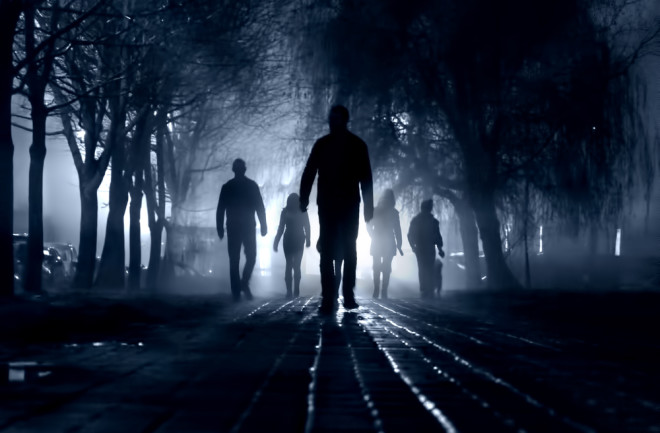Several years back, a woman checked herself into a hospital psychiatric unit.
She needed help, she told her doctors, because she was terrified of… zombies.
Her doctors did what good doctors do: They used cognitive behavior therapy to help the woman question her thoughts and fears. Within days, the woman was laughing at her folly, and she was discharged.
It’s possible that zombies do lurch about our world — just not in the ways depicted in popular movies or television shows.
Real Life Zombie or Buried Alive?
For example, in the late 1990s, Roland Littlewood and Chavannes Douyon, of the University College of London, traveled to southern Haiti to study a woman who had reportedly been zombified.
Researchers referred to the woman as “FI,” who had died after suffering a fever.
Three years later, however, a friend spotted FI, seemingly alive, stumbling and swaying around the village. When FI’s parents dug up her grave, they found no body. Instead, the tomb was full of rocks. Cue the haunting music.
FI’s family and villagers referred to her as a zombie, but she hadn’t been bitten or infected with a virus. Rather, the researchers theorized, someone had drugged FI with a neuromuscular toxin that paralyzed her, making her appear to be dead.
Jimsonweed
After she was buried alive, she’d run out of oxygen and suffered brain damage, the researchers mused. Her assailant then dug her free and potentially administered datura stramonium (also known as jimsonweed).
“The use of Datura stramonium […] and its possible repeated administration during the period of zombie slavery could produce a state of extreme psychological passivity,” writes the researchers in the Lancet.
Here’s the thing: It’s not super clear if the above is truly what happened to FI — or any other so-called zombified person. “Mistaken identification of a wandering, mentally ill stranger by bereaved relatives is the most likely explanation,” writes the two researchers.
On top of that, poison isn’t contagious, which means FI and others like her are not about to trigger a zombie apocalypse.
Is the Zombie Virus Real?
That’s often what happens in the movies, right? A flu virus mutates, spreads and infects people, transforming them into undead, off-balance brain eaters. Could that happen?
Not really. To understand why, let’s look at a modern-day virus that comes closest to zombifying its prey: Rabies.
Rabies
Like in the movies, rabies spreads through bites and scratches, and it also eats away at the brain. When the cerebellum goes offline, rabies victims stumble around in an agitated, zombie-like state.
However, rabies sufferers are not undead — nor do they crave brains. More importantly, modern medicine can prevent the disease.
“It would be hard to imagine a pandemic that spreads by people biting each other,” explains Steven Schlozman, associate professor of psychiatry, pediatrics and medical education at Dartmouth. “Zombies are not that fast or coordinated. We could get ahead of that. We could put a fence around them, study them, and figure out what’s wrong with them.”
That said, zombie movies aren’t complete works of fiction.
Read More: 'Zombie' Viruses, Up to 50,000 Years Old, Are Awakening
Can a Zombie Apocalypse Happen Like the Movies?
They do get some things right, says Schlozman, whose 2011 novel, The Zombie Autopsies, was optioned by George Romero, the creator of the Night of the Living Dead series of zombie films.
“The crossovers have less to do with what turns someone into a zombie, and more to do with our response to them,” says Schlozman.
Though the film version of The Zombie Autopsies was never made, the opening scene would have depicted humans getting in a fistfight on an airplane as they argued over whether they should or shouldn’t be forced to wear masks.
“George said that, if this happened, people would argue about it,” says Schlozman. “That was back in 2013. Sadly, now we know he was right.”
Read More: Five Apocalypses Humanity Has Survived
Zombie Pandemic Parallels
During the height of the COVID-19 pandemic, for example, a parent made news for punching a teacher over masking rules. After a Missouri school board approved a masking mandate, a fistfight broke out.
Here’s another common social thread. In zombie movies and television shows, human cooperation often breaks down. Rather than working together to solve problems, healthy humans tend to gather in small tribes, often raiding and warring with other tribes over resources and power.
“In the movies, we always see these petty arguments about race or class,” says Schlozman.
Similarly, during COVID-19, protesters plastered flyers with the words “Jew” and “fraud” in Hawaii Lt. Gov. Josh Green’s neighborhood. Racism against Asian Americans jumped more than 300 percent.
“One of the things these movies show is when we see something that doesn't add up to us, we end up marshaling those brain regions that are most consistent with the zombies,” says Schlozman. “George was a little melancholy about humanity. He was like, ‘We could handle this. The saddest thing about my movies,’ he always said, ‘is that it doesn’t have to be this way.’”
Read More: Here's What Really Inspired Vampire Legends
